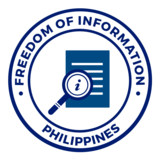Most of the “complaints” were confined to the following three major areas:
1. Abrupt Change in ” water rates” – This complaint is true in many cases and may have been brought about by the failure of the water district to give advance notice and information of such charges to its water consumers. Although the increase may have been fully justified for fair and reasonable causes, their immediate implementation without due public hearings where such change is exhaustively explained will certainly bring about complaints.
2. Exorbitant “water charges” – This complaint is commonly due to several causes, namely high consumption of water abetted by wasteful use of water and leakages. A water user classified as a commercial or industrial user normally pays more than one classified as domestic or government.
3. The alleged water district’s “unjust practices” – Complaints of these kind may enhance from misunderstanding of, or lack of communication on, the changes in procedures, system and practices.
Some of the basic utility practices now being implemented under the new concept are:
1. Metering of connection and measuring actual consumption of water.
2. Strict collection enforcement. The idea here is to have the consumers pay their bills on time.
3. Disconnection Policy. This measure is to discourage delinquency in the payment of water bills.
4. Penalties for late payment. Fines of this kind area reasonable. This is an exercise to make water user pay on time.
5. Classification of connections. Done in the furtherance of equitable distribution of costs and principle of cross-consumer subsidy.



